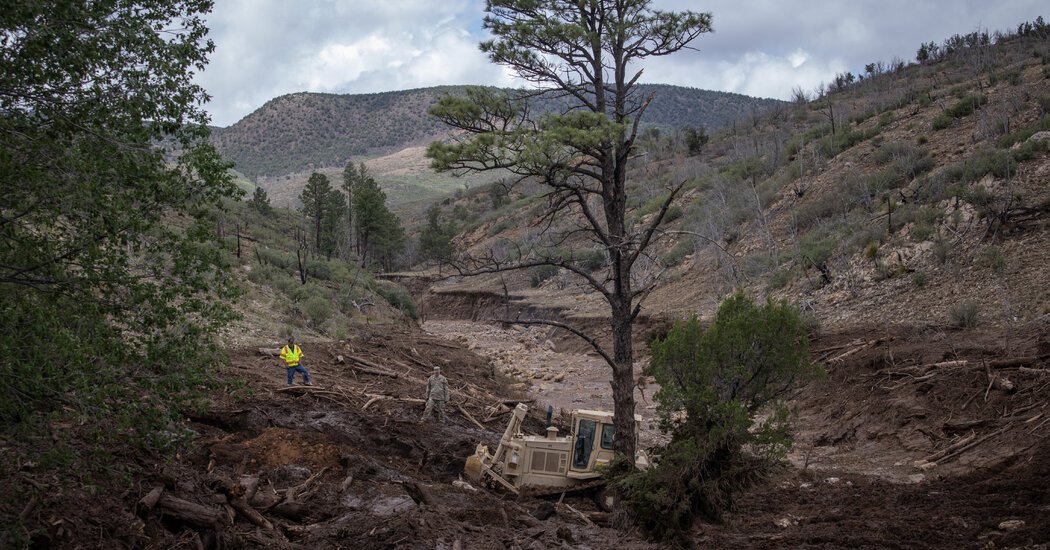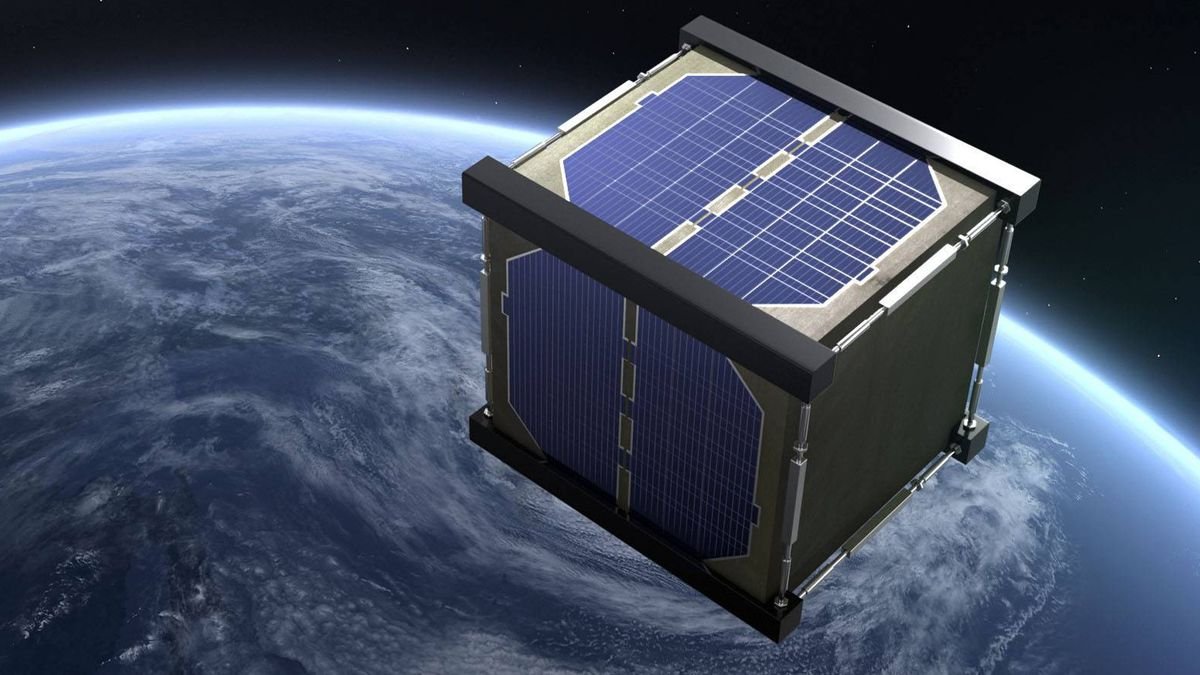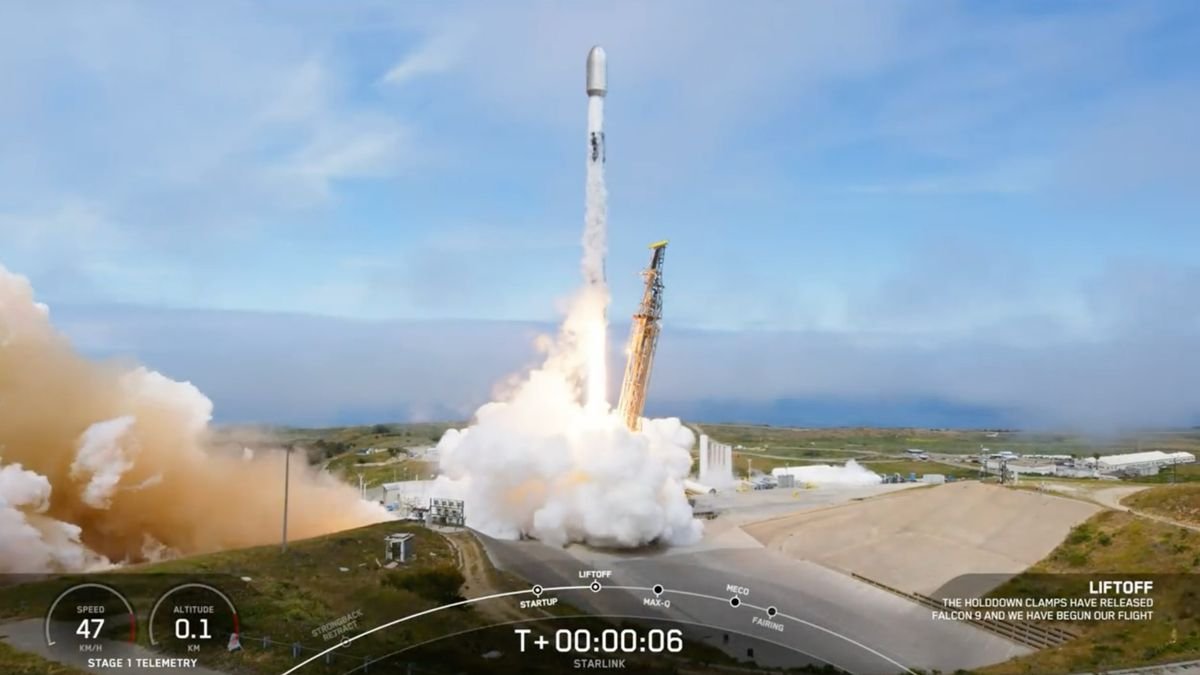After two weeks of wildfires, a deluge in New Mexico caused severe flash flooding and debris flows near Ruidoso over the weekend.
Dark floodwaters, blackened with soot and ash from the South Fork and Salt fires, rushed down mountain canyons and into town, turning Highway 70 into a river and pushing over a fuel tanker, according to videos posted to social media. Homes and business suffered damage, and emergency services reported 77 water rescues.
“It’s going to be a long road to recovery,” said Kerry Gladden, a public information officer for the Village of Ruidoso. Monsoon season typically starts around July 4, and this year, it coincided with two weeks of wildfires, vastly increasing flood risks. “This is going to continue to happen each time we get a heavy rainfall,” Ms. Gladden said.
While the South Fork and Salt fires killed two people and burned more than 25,000 acres last month, the burn scars left behind could put residents at even greater risk than the wildfires themselves.

Climate change, driven primarily from the burning of fossil fuels, continues to cause increases in both high-severity fires that kill vegetation and dry out soils, and extreme rainfall events that deliver more precipitation in shorter amounts of time. The combination of dry soil and heavy rain increases the odds for hazards like flash flooding and debris flows — a dangerous mix of water, mud, boulders and trees after a fire.
“It’s a mistake to think of flash flooding or debris flow after the fact as a footnote, instead of a big part of the fire itself,” said Don Falk, a professor in natural resources and fire ecology at the University of Arizona. “It can be more destructive and cause more loss of life than the fire.”
On Saturday afternoon, Brittany Smith, 34, was helping her parents move back into their cabin after officials announced the wildfires were contained. Then their phones suddenly lit up with a new emergency alert: a flash flood warning and urgent evacuation order.
That afternoon, a six and a half foot wall of dark water rushed through their neighborhood in Upper Canyon, a gorge with steep slopes. On Sunday, as the family tried to return, the Village of Ruidoso initiated a third evacuation warning: “Go now!” the order said.
Three factors increase the likelihood and danger of a post-fire flooding and debris flow: how severely the soil is burned, how intense the rainfall is and the steepness of the landscape.
The canopy of trees and vegetation on the forest floor would normally act like a sponge, intercepting rainfall. That’s especially important during the intense monsoons that happen during Southwestern summers.
However, that sponge effect is destroyed by super hot fires. When the rains come, the dead soil moves quickly, which destabilizes steep slopes.
The effect can last for years. “The fact that over the last several decades there’s been an increase in fire severity,” said Luke McGuire, an associate professor in geomorphology at the University of Arizona, “that’s driving an increase in these post-fire hazards.”
Karen Miranda Gleason, the public information officer for the Burned Area Emergency Response team, said high soil-burn severity would be found in areas of the South Fork fire, though the official burn severity map isn’t yet published.
For the last 150 years, land-management practices overall minimized natural and prescribed burns, which is the practice of intentionally setting smaller, controlled fires as a preventive measure.
T.J. Clifford, team lead for BAER under the Department of the Interior, said the New Mexico fires wouldn’t have severely burned the soil if the area had been maintained using land management practices like thinning forests or prescribed fire. But that can be unpopular.
“Prescribed fire is smoke in the air, and the public doesn’t like smoke in the air,” he said. “It’s very tough to get support.”
While flooding has already hit the region, debris flows are still a looming threat. While floods are like pulling a silk gown through a channel, said Mr. Clifford, a debris flow, a type of landslide, is like rubbing sandpaper down a channel, funneling whatever gets struck.
“Post-fire debris flows are different beasts from floods,” said Dr. McGuire. They can create different problems, often affecting people and infrastructure more severely than a flood and hitting areas outside a typical floodplain.
Dr. McGuire and his colleagues published a study in May in Nature Reviews Earth & Environment that showed post-debris flows were increasingly recurring. In 68 percent of global locations where debris flows had already happened, another was likely to occur in the future.
While the house of Ms. Smith and her parents has so far been spared, neighbors were not so lucky. Charred trees border their washed-out driveway, but just across the street, chimneys made of river rock loom above houses flattened by fire. “Our emotions are all over the place,” Ms. Smith said on Sunday. “The Upper Canyon looks devastating.”
The official cause of the fire is still under investigation. The F.B.I. is offering a $10,000 reward for any information that could lead to the arrest of those responsible for starting the fire.










